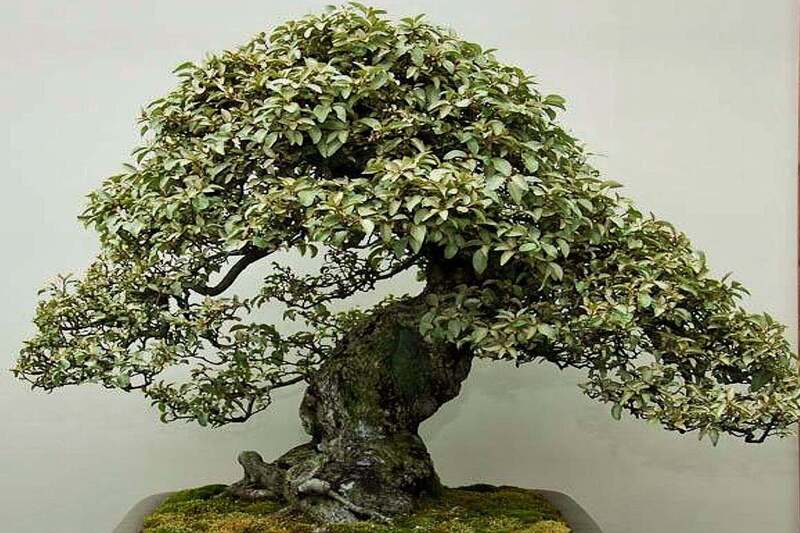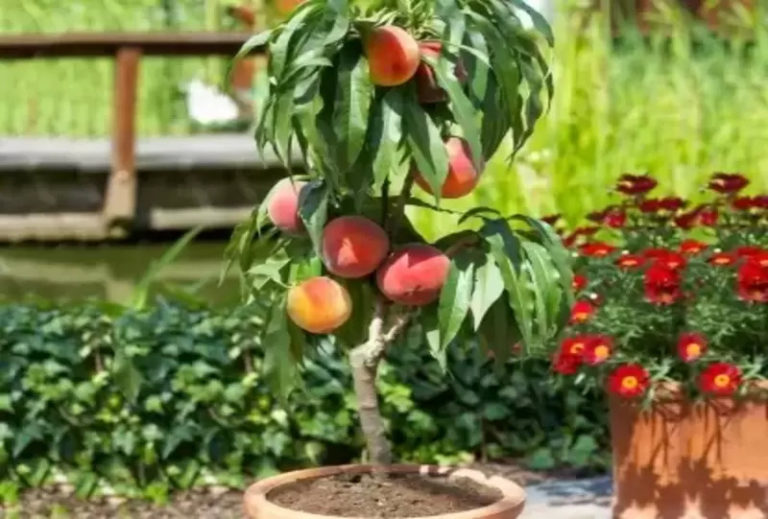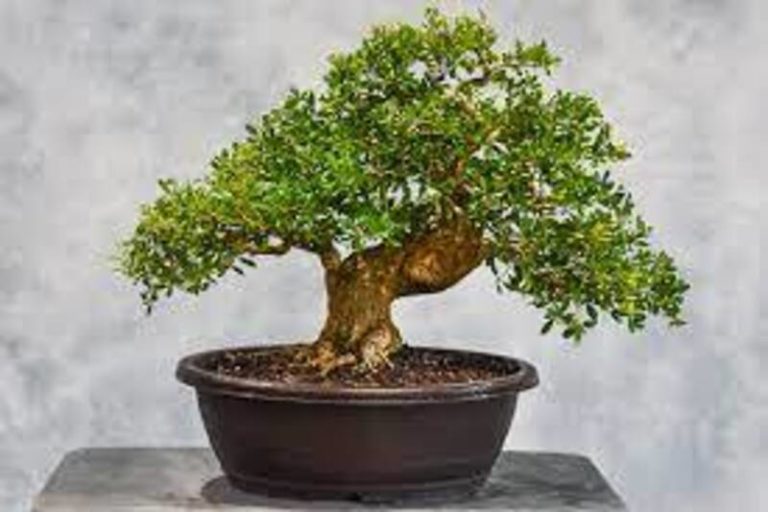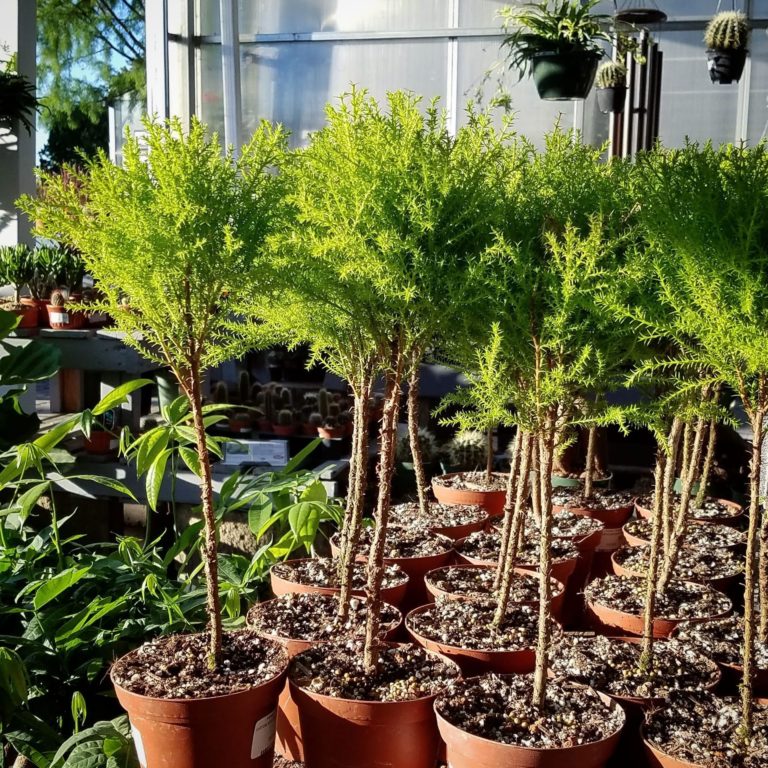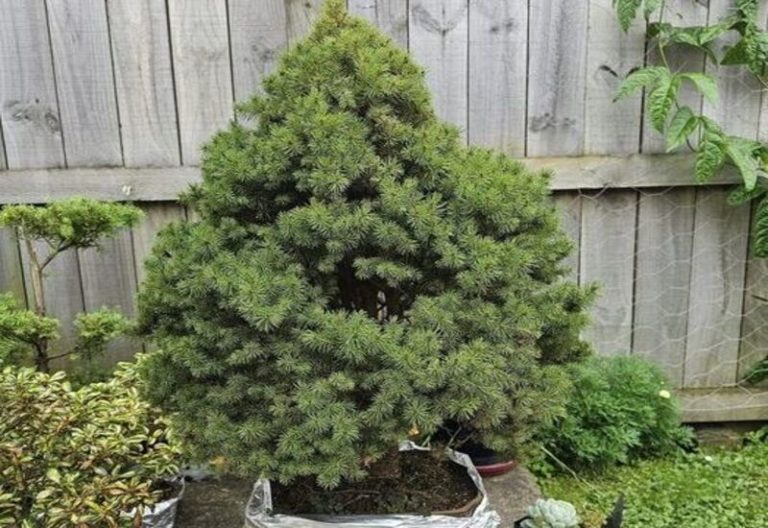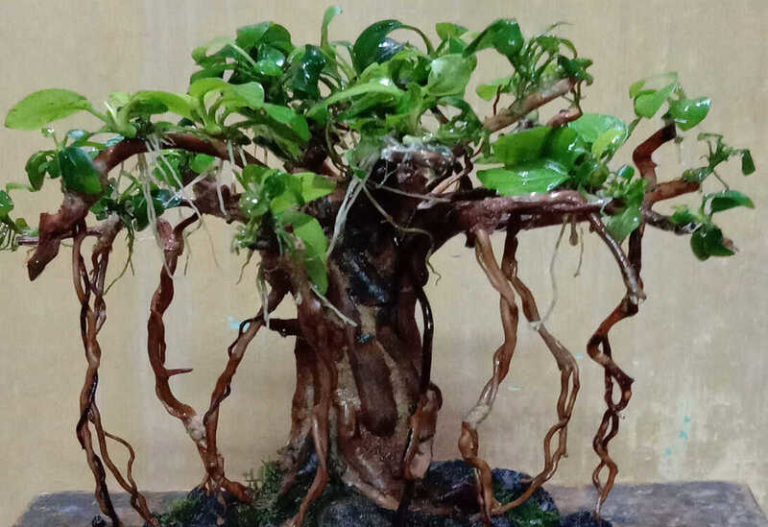Silverberry Bonsai: Cultivating Nature’s Silver Elegance
Bonsai, the art of growing miniature trees, is captivating and serene. One intriguing bonsai variety is the silverberry bonsai, known for its unique qualities. In this article, we will explore the world of silverberry bonsai, its cultivation, styling, and maintenance.
What is a Silverberry Bonsai?
A Silverberry bonsai is a miniature tree created from the silverberry plant, a shrub belonging to the Elaeagnaceae family. It is a popular choice for bonsai enthusiasts due to its small silver or gray-green leaves, graceful branches, and adaptability to bonsai cultivation. The Silverberry bonsai can be styled in various traditional bonsai forms and requires regular care and maintenance, including watering, fertilization, and protection from pests and diseases. It offers bonsai enthusiasts the opportunity to cultivate a beautiful and unique miniature tree.
History and Origins of the Silverberry Bonsai
The Silverberry bonsai has a rich history and fascinating origins. The silverberry plant (Elaeagnus spp.), from which the bonsai is derived, has a long-standing presence in various parts of the world.
The Elaeagnus genus is endemic to Asia, Europe, and North America. The actual history of the silverberry bonsai as a distinct bonsai variety is difficult to establish, although its cultivation most likely originates from the larger practice of bonsai, which started in China over a thousand years ago.
During the Tang Dynasty (618-907) in Japan, the craft of bonsai spread from China and grew into a distinct Japanese art form. Japanese bonsai masters perfected techniques and styles, combining many plant species, like the silverberry, into their bonsai masterpieces.
The silverberry plant is known in Japan as “Gumi” or “Yama Gumi.” The creation and popularization of silverberry bonsai as a separate bonsai variation has been heavily impacted by the Japanese bonsai tradition. Japanese bonsai fans and specialists have influenced the methods and aesthetics connected with silverberry bonsai.
The art of bonsai and the cultivation of silverberry bonsai expanded around the world throughout time. Bonsai enthusiasts from several nations accepted the silverberry as a good plant for bonsai and included it into their own local bonsai traditions.
Silverberry bonsai may now be found in bonsai collections, shows, and nurseries worldwide. Its distinct characteristics, such as thin silver or gray-green leaves and elegant branches, make it a popular option among bonsai aficionados who value beauty and adaptability.
The history and origins of the silverberry bonsai reflect the art form’s ongoing evolution and cross-cultural impact. It emphasizes the respect for nature’s beauty as well as the painstaking gardening practices passed down through generations.
Silverberry Bonsai and Their Symbolism
Silverberry bonsai, like many other bonsai varieties, holds symbolic significance in different cultures. The symbolism associated with silverberry bonsai can vary depending on cultural interpretations and personal perspectives. Here are a few common symbolic meanings associated with silverberry bonsai:
- Longevity: Bonsai, including silverberry bonsai, often symbolize longevity and the appreciation of the passing of time. The careful cultivation and shaping of a bonsai tree over years or even decades reflect the endurance and wisdom acquired through age.
- Resilience: The silverberry plant itself is known for its ability to withstand harsh conditions and adapt to different environments. As a bonsai, the silverberry represents resilience and the ability to thrive despite challenges or adversity. It serves as a reminder to stay strong and resilient in the face of difficulties.
- Balance and Harmony: Bonsai, including silverberry bonsai, embody the concept of balance and harmony between nature and human intervention. The meticulous shaping and pruning of the bonsai tree represent the harmonious relationship between nature’s growth and the artist’s touch. It symbolizes the pursuit of balance and unity in life.
- Tranquility and Zen: Silverberry bonsai cultivation is frequently connected with serenity, meditation, and Zen practices. Caring for and viewing a bonsai tree may induce feelings of serenity and awareness, allowing one to connect with nature and achieve inner peace.
- Beauty in Simplicity: Silverberry bonsai, with its delicate leaves and graceful branches, exemplifies the beauty found in simplicity. It reminds us to appreciate the elegance and beauty in the small details of life, emphasizing the value of simplicity and minimalism.
It’s important to note that symbolism can vary among individuals and cultures. While these meanings are commonly associated with silverberry bonsai, personal interpretations and cultural backgrounds may influence how individuals perceive and attach symbolism to these miniature trees. Ultimately, the symbolism of silverberry bonsai can be a deeply personal and introspective experience for each individual who cultivates and appreciates them.
Characteristics of the Silverberry Bonsai
The Silverberry bonsai has numerous distinguishing traits that make it an enticing choice for bonsai aficionados. These traits contribute to its aesthetic appeal and aptitude for bonsai culture. The Silverberry bonsai has the following distinguishing characteristics:
Small Leaves: The Silverberry bonsai is known for its small leaves, which are typically oval or lance-shaped. The diminutive size of the leaves is desirable in bonsai cultivation as it helps create a sense of proportion and balance in the overall design.
Silver or Gray-Green Foliage: As the name suggests, the Silverberry bonsai exhibits silver or gray-green foliage. This distinctive coloration adds visual interest and uniqueness to the bonsai’s appearance. The silver or gray-green leaves can create a beautiful contrast against other plants or bonsai varieties in a collection.
Elegant Branching: The branches of the Silverberry bonsai have a graceful and elegant quality. They often have a slightly cascading or arching growth pattern, which adds to the overall aesthetic appeal of the tree. The branching structure can be shaped and trained to create a balanced and visually pleasing bonsai design.
Fragrant Flowers: Another attractive feature of the Silverberry bonsai is its small, fragrant flowers. Depending on the specific silverberry variety, the flowers may be creamy white or yellow in color and emit a pleasant fragrance. The blossoming of these fragrant flowers adds a delightful sensory experience to the bonsai.
Adaptability: Silverberry bonsai is known for its adaptability to different environmental conditions. It can tolerate a wide range of temperatures and is relatively resilient to various growing conditions. This adaptability makes it suitable for bonsai enthusiasts in different climates and allows for successful cultivation in diverse regions.
Bark Texture: As the Silverberry bonsai ages, its bark develops an interesting texture and coloration. The bark can become rough and exhibit shades of gray or brown, adding depth and character to the overall appearance of the tree.
Drought Tolerance: Silverberry bonsai has natural drought tolerance, which can be beneficial for bonsai enthusiasts who may occasionally forget to water their plants. This characteristic makes it more forgiving in terms of watering requirements compared to other bonsai varieties.
Overall, the Silverberry bonsai combines tiny leaves, silver or gray-green foliage, graceful branching, fragrant blossoms, adaptability, and other distinguishing features to produce an aesthetically beautiful and intriguing bonsai tree. These characteristics make it appealing to both seasoned and novice bonsai lovers.

Types of Silverberry Bonsai
There are several types of silverberry (Elaeagnus spp.) that are suitable for bonsai cultivation. Each type has its own unique characteristics and growth habits. Here are a few common varieties of silverberry bonsai:
1. Elaeagnus pungens: Also known as Thorny Elaeagnus or Silverthorn, this variety is native to Asia and has spiny branches. It features glossy, silver-green leaves and produces fragrant yellow flowers. Elaeagnus pungens is known for its hardiness and adaptability, making it a popular choice for bonsai enthusiasts.
2. Elaeagnus umbellata: Commonly referred to as Autumn Olive or Japanese Silverberry, this variety originates from Asia. It has oval-shaped leaves with silvery undersides and clusters of small, fragrant yellow flowers. Elaeagnus umbellata is valued for its hardiness and ability to tolerate a variety of soil conditions.
3. Elaeagnus angustifolia: Known as Russian Olive or Oleaster, this variety is native to Europe and Asia. It has narrow, silver-gray leaves and produces small, fragrant yellow flowers. Elaeagnus angustifolia is appreciated for its ability to withstand harsh climates and poor soil conditions, making it a resilient choice for bonsai cultivation.
4. Elaeagnus multiflora: Also called Goumi or Cherry Silverberry, this variety is native to Asia. It has dark green leaves with silver undersides and produces small, fragrant white flowers followed by red berries. Elaeagnus multiflora is known for its ornamental value and is often cultivated for its edible berries.
These are only a handful of the silverberry cultivars that are regularly utilized in bonsai horticulture. Each variety has its own unique traits, such as leaf form, color, blooming patterns, and growth behaviors. Silverberry varieties can be chosen by bonsai enthusiasts according on their tastes and desired bonsai aesthetics.
How to Grow a Silverberry Bonsai
Growing a silverberry bonsai requires careful attention to its specific needs and proper cultivation techniques. Here are some steps to guide you in growing a healthy and beautiful silverberry bonsai:
Select a Healthy Silverberry Plant: Choose a young silverberry plant from a reputable nursery or garden center. Look for a healthy plant with compact growth, strong roots, and vibrant foliage. Ensure that it is suitable for bonsai cultivation, with desirable characteristics such as small leaves and elegant branching.
Choose the Right Bonsai Pot: Select an appropriate bonsai pot that provides adequate drainage. The pot should be proportionate to the size of the plant, allowing for future root development. Consider using a shallow pot to encourage the development of a balanced root system.
Prepare the Bonsai Soil: Silverberry bonsai thrives in well-draining soil. Prepare a bonsai soil mixture that consists of components such as Akadama, pumice, and organic matter like compost or bark. This mixture promotes good drainage while retaining some moisture and nutrients.
Repotting the Silverberry Bonsai: Repotting should be done every two to three years, usually in early spring before new growth begins. Carefully take the plant from its nursery container, carefully release the root ball, and clip any extremely long or broken roots. Fill the new bonsai container with the prepared bonsai soil mixture and place the silverberry bonsai inside.
Pruning and Shaping: Prune the branches and foliage of the silverberry bonsai to create the desired shape and form. Use bonsai pruning shears to remove any unwanted or excessive growth. Consider the principles of bonsai design, such as balance and proportion, while shaping the tree. Regular pruning helps maintain the desired size and structure of the bonsai.
Watering and Fertilizing: Water the silverberry bonsai thoroughly when the soil starts to feel slightly dry. Avoid overwatering, as it can lead to root rot. Apply a balanced liquid bonsai fertilizer according to the manufacturer’s instructions during the growing season to provide the necessary nutrients for healthy growth.
Sunlight and Temperature: Silverberry bonsai prefers a sunny location with partial shade. Place the bonsai where it can receive bright but indirect sunlight for a significant part of the day. Protect the tree from extreme temperatures and frost, as silverberry bonsai is relatively hardy but may suffer damage in severe conditions.
Pest and Disease Control: Monitor the silverberry bonsai for common pests such as aphids, spider mites, or scale insects. Treat any infestations promptly with suitable organic or chemical controls. Ensure good airflow around the bonsai to prevent the development of fungal diseases.
Regular Maintenance: Maintain the overall health and appearance of the silverberry bonsai through regular care. Remove any weeds, check for root health during repotting, and conduct routine inspections for pests and diseases. Adjust watering and fertilizing as needed, considering seasonal variations.
Patience and Observation: Growing a silverberry bonsai requires patience and observation. Monitor the tree’s growth, observe how it responds to different conditions, and make adjustments accordingly. Remember that bonsai is an art form that develops over time, so enjoy the process and allow the silverberry bonsai to mature and thrive.
By following these guidelines and providing proper care, you can grow a stunning silverberry bonsai that brings beauty and serenity to your bonsai collection.
Benefits of the Silverberry Bonsai
The Silverberry bonsai offers several benefits, making it a rewarding choice for bonsai enthusiasts. Here are some key advantages of cultivating a Silverberry bonsai:
- Aesthetic Appeal: The Silverberry bonsai exhibits unique features such as small silver or gray-green leaves, elegant branching, and interesting bark texture. These characteristics contribute to its visual appeal, making it a striking addition to any bonsai collection or display.
- Adaptability: The adaptability of silverberry bonsai to diverse environmental conditions is well-known. It is suitable for bonsai enthusiasts in a wide spectrum of climates and soil conditions. Its adaptability permits cultivation in a variety of climates and environments.
- Low Maintenance: Silverberry bonsai requires relatively low maintenance compared to some other bonsai varieties. It is resilient and can tolerate occasional neglect or slight variations in watering and fertilizing. This makes it a suitable choice for beginners or those with busy schedules.
- Drought Tolerance: Silverberry bonsai has natural drought tolerance, which means it can withstand periods of reduced watering. This characteristic makes it more forgiving in terms of watering requirements and allows for easier maintenance in arid or dry regions.
- Fragrant Flowers: Some silverberry varieties produce small, fragrant flowers. The blossoming of these delicate and scented flowers adds an extra sensory element to the bonsai experience, creating a delightful ambiance.
- Bonsai Training: Silverberry bonsai is amenable to bonsai training techniques such as pruning, wiring, and shaping. Its small leaves and elegant branching structure make it suitable for various bonsai styles and designs. Bonsai enthusiasts can exercise their creativity and artistic expression while working with the Silverberry bonsai.
- Symbolism: The Silverberry bonsai, like other bonsai trees, has symbolic values such as lifespan, resistance, and balance. Cultivating and caring a bonsai tree, such as the Silverberry bonsai, may bring a sense of calm, awareness, and a deeper connection with nature.
- Educational Value: Growing a Silverberry bonsai offers a learning experience in horticulture, patience, and the art of bonsai. It provides an opportunity to develop skills in tree care, observation, and the understanding of plant growth and development.
Overall, the Silverberry bonsai combines its unique aesthetic appeal, adaptability, low maintenance requirements, and symbolic significance to provide a fulfilling and rewarding experience for bonsai enthusiasts. It offers a beautiful and tranquil addition to any space, allowing individuals to enjoy the artistry and beauty of nature in a miniature form.
Displaying Silverberry Bonsai
Displaying a Silverberry bonsai is an important aspect of showcasing its beauty and creating a visually pleasing arrangement. Here are some tips for displaying your Silverberry bonsai:
Bonsai Stand or Table: Place your Silverberry bonsai on a dedicated bonsai stand or table. Choose a stand or table that complements the style and aesthetics of your bonsai. It should be sturdy, stable, and elevate the bonsai to a suitable height for easy viewing.
Lighting: Position your Silverberry bonsai in a location that receives adequate natural light. Bonsai trees, including the Silverberry bonsai, thrive in bright but indirect sunlight. Avoid placing the bonsai in direct sunlight, as it may cause leaf burn. If natural light is limited, consider using artificial grow lights to supplement the lighting.
Background and Focal Point: Choose a suitable background or backdrop for your Silverberry bonsai display. A neutral or contrasting background can enhance the bonsai’s visual impact. Avoid busy or distracting backgrounds that may take away from the bonsai’s beauty. Additionally, consider creating a focal point or arranging multiple bonsai trees together to create an attractive display.
Rotation: Regularly rotate your Silverberry bonsai to ensure even growth and prevent it from leaning or growing towards one side. Rotating the bonsai allows all sides of the tree to receive adequate light and promotes balanced development.
Accents and Complementary Elements: Consider incorporating accent plants, rocks, or decorative elements to enhance the overall display. These elements can add depth, texture, and interest to the arrangement. Ensure that the accents and complementary elements do not overshadow the bonsai but rather complement and enhance its beauty.
Size and Proportions: Consider the size and proportions of your Silverberry bonsai in relation to the display area. Ensure that the bonsai does not overpower or appear disproportionately small in comparison to the surrounding space or other elements in the display.
Display Changes: Periodically change the display of your Silverberry bonsai to keep it fresh and engaging. You can rotate the bonsai with other trees, adjust the positioning, or modify the accents and complementary elements. Changing the display allows you to appreciate different perspectives and showcase the bonsai’s beauty in new ways.
Remember that the display of your Silverberry bonsai is a creative and personal endeavor. Experiment with different arrangements and design elements to find a display style that best highlights the unique characteristics and aesthetics of your bonsai. Regular care, pruning, and attention to detail will help maintain the health and visual appeal of your Silverberry bonsai display.
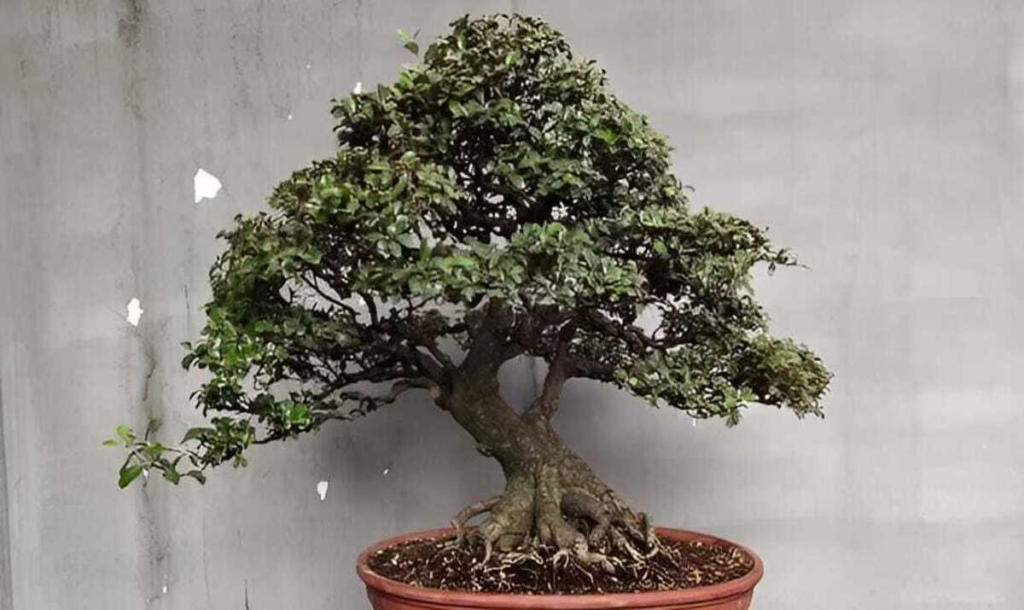
Styling and Design of a Silverberry Bonsai
When it comes to styling and designing a Silverberry bonsai, there are various approaches and techniques you can employ to create a visually appealing and balanced composition. Here are some considerations for styling and designing your Silverberry bonsai:
Bonsai Styles: Choose a bonsai style that suits the characteristics of your Silverberry bonsai. Popular styles include formal upright (chokkan), informal upright (moyogi), slanting (shakan), cascading (kengai), and windswept (fukinagashi). Each style has its own unique characteristics and can evoke different moods or visual effects.
Branch Structure: Carefully observe the natural growth pattern of your Silverberry bonsai and develop its branch structure accordingly. Prune and shape the branches to create an aesthetically pleasing and balanced silhouette. Use bonsai wire to gently guide the branches into the desired position, taking care not to damage the bark.
Trunk Development: Consider the trunk’s thickness, movement, and taper. A thicker base tapering towards a thinner apex is often desirable in bonsai aesthetics. If necessary, use techniques such as trunk chopping or air layering to create a more interesting and mature-looking trunk.
Foliage Pads: Encourage the development of dense foliage pads by pruning and pinching the shoots. This helps create a more refined and compact appearance. Use bonsai shears or scissors to trim the foliage, maintaining the desired shape and size of the pads.
Negative Space: Pay attention to negative space, which refers to the empty or open spaces within the design. Negative space is as important as the tree itself, as it enhances the overall balance and harmony of the composition. Ensure that negative spaces are well-distributed and contribute to the overall aesthetics of the Silverberry bonsai.
Balance and Proportion: Aim for a sense of balance and proportion in your Silverberry bonsai design. Consider the size of the trunk, branches, foliage pads, and pot in relation to each other. Avoid having excessively long or heavy branches on one side, as it may create an unbalanced appearance.
Repotting and Root Pruning: Periodically repot your Silverberry bonsai to maintain its health and encourage root development. During repotting, consider root pruning to refine the root system and encourage a compact root ball. This helps balance the size of the tree above ground with its root system below.
Patience and Continual Refinement: Remember that styling and designing a Silverberry bonsai is an ongoing process. It takes time and patience to achieve the desired look. Continually assess and refine your design as the bonsai develops, making adjustments as necessary to create a visually pleasing and harmonious composition.
By applying these styling and design principles, you can create a Silverberry bonsai that reflects your artistic vision while highlighting the unique characteristics and beauty of the tree. Remember to approach the process with care, respect for the tree’s natural growth patterns, and a willingness to continually refine and improve your design over time.
How to Care for and Maintain a Silverberry Bonsai
The care and maintenance of a Silverberry bonsai is critical to its health, development, and lifespan. Here are some important factors to consider while caring for and maintaining your Silverberry bonsai:
- Watering: Proper watering is crucial for the health of your Silverberry bonsai. Water the tree thoroughly when the topsoil starts to feel slightly dry. Avoid overwatering, as it can lead to root rot. Ensure that the water penetrates the entire root system by watering until it drains out of the drainage holes at the bottom of the bonsai pot. Adjust the frequency of watering based on factors such as climate, season, and the moisture-retention capabilities of the soil.
- Fertilizing: Regular fertilization provides essential nutrients to your Silverberry bonsai. Use a balanced, slow-release bonsai fertilizer or organic alternatives. Apply the fertilizer according to the manufacturer’s instructions, typically during the growing season. Adjust the dosage and frequency based on the specific needs of your bonsai and its growth rate.
- Pruning: Pruning is a fundamental aspect of bonsai care. Regularly prune the branches and foliage of your Silverberry bonsai to maintain its shape, encourage branching, and refine the overall design. Use sharp bonsai pruning shears to make clean cuts, removing any dead, damaged, or unwanted growth. Prune during the appropriate season, typically in spring or early summer when the tree is actively growing.
- Wiring: Wiring is a technique used to shape and position branches in bonsai. Use bonsai wire to gently guide the branches of your Silverberry bonsai into the desired position. Take care not to wrap the wire too tightly, as it can damage the branches. Remove the wire before it starts to bite into the bark, usually after a few months.
- Sunlight and Temperature: Silverberry bonsai thrives in bright, indirect sunlight. Place your bonsai in a location where it can receive several hours of sunlight each day. Avoid exposing the bonsai to intense, direct sunlight, as it may scorch the leaves. Ensure that the bonsai is protected from extreme temperatures and frost, as Silverberry bonsai is generally hardy but can suffer damage in severe conditions.
- Soil and Repotting: Silverberry bonsai prefers well-draining soil. Use a bonsai soil mix that allows for adequate drainage while retaining some moisture and nutrients. Repot your Silverberry bonsai every two to three years to prevent root congestion and promote healthy root development. Repotting is typically done in early spring before new growth starts.
- Pests and Diseases: Inspect your Silverberry bonsai on a regular basis for pests such as aphids, spider mites, and scale insects. If you see any symptoms of an infestation, take the necessary steps to manage and remove the bugs. Maintain enough ventilation around the bonsai to avoid the growth of fungal infections. To minimize additional spread and harm, treat any illnesses as soon as possible.
- Seasonal Care: Adjust your care routine based on the seasonal requirements of your Silverberry bonsai. During the dormant period in winter, reduce watering and avoid fertilizing. Monitor the tree’s health and make any necessary adjustments to your care routine as seasons change.
- Observation and Adjustment: Regularly observe your Silverberry bonsai for any signs of stress, nutrient deficiencies, or growth imbalances. Adjust your care routine accordingly, whether it involves modifying watering frequency, adjusting fertilizer dosage, or addressing any specific issues that may arise.
Remember that caring for a Silverberry bonsai is an ongoing process that requires attentiveness, patience, and understanding of the tree’s needs. Regular care and maintenance will ensure the health, beauty, and longevity of your Silverberry bonsai, allowing you to enjoy the rewards of this living art.
Silverberry Bonsai Care Sheet
| Aspect | Care Tips |
| Watering | Water when the topsoil is slightly dry. Avoid overwatering. |
| Sunlight | Place in bright, indirect sunlight. Protect from intense sun. |
| Temperature | Protect from extreme temperatures and frost. |
| Humidity | Moderate humidity is generally suitable. |
| Fertilization | Use a balanced, slow-release bonsai fertilizer. |
| Pruning and Trimming | Regularly prune to maintain shape and remove unwanted growth. |
| Wiring and Styling | Use bonsai wire for shaping branches. Remove wire as needed. |
| Repotting | Repot every 2-3 years to prevent root congestion. |
| Pest and Disease Control | Regularly inspect for pests and treat as necessary. |
| Winter Care | Reduce watering and avoid fertilizing during the dormant period. |
| Regular Maintenance | Monitor tree health, adjust care routine as needed. |
Remember, these care tips serve as general guidelines. It’s important to observe your Silverberry Bonsai closely and make adjustments based on its specific needs.
Conclusion
Silverberry bonsai offers a delightful journey into the art of bonsai. By understanding its cultivation, styling, and maintenance techniques, you can create a stunning miniature tree that brings tranquility to your space. Embrace the beauty and satisfaction of growing silverberry bonsai, and embark on a fulfilling bonsai experience.
FAQ:
Q: What is a Silverberry Bonsai?
A: A Silverberry Bonsai is a miniature tree that is cultivated and trained to resemble a fully-grown tree in a smaller size. It is specifically the bonsai version of the Silverberry shrub (Elaeagnus pungens), which is known for its silver-gray foliage and small, fragrant flowers.
Q: How big do Silverberry Bonsai trees grow?
A: When completely mature, Silverberry Bonsai trees typically reach a height of 1 to 3 feet (30 to 90 centimeters), depending on the variety and care provided.
Q: What are the care requirements for Silverberry Bonsai?
A: Silverberry Bonsai require regular watering, well-draining soil, bright indirect sunlight, and occasional fertilization. Pruning, wiring, and repotting are also important aspects of their care to maintain their shape and health.
Q: Can Silverberry Bonsai be grown indoors?
A: While Silverberry Bonsai can be grown indoors, they generally thrive better when placed outdoors where they can receive ample sunlight and fresh air. If grown indoors, it is important to provide them with adequate light and proper environmental conditions.
Q: How long do Silverberry Bonsai trees live?
A: Silverberry Bonsai trees can survive for decades when given the appropriate care. The longevity of a bonsai tree is largely dependent on its maintenance, which includes irrigation, pruning, fertilization, and protection from pests and diseases.
Q: Do Silverberry Bonsai trees produce fruit?
A: Yes, Silverberry Bonsai trees can produce small, edible berries. However, the fruiting may be limited in bonsai form due to the tree’s reduced size and the focus on aesthetic shaping.
Q: Can I style and shape my Silverberry Bonsai?
A: Yes, Silverberry Bonsai can be styled and shaped using techniques such as pruning, wiring, and trimming. These techniques help create the desired form and enhance the bonsai’s overall aesthetics.
Q: Are Silverberry Bonsai trees susceptible to pests and diseases?
A: As with any other plant, Silverberry Bonsai trees may be susceptible to aphids, spider mites, and scale insects. They are susceptible to fungal diseases as well. Regular monitoring, appropriate care, and prompt treatment can aid in preventing and controlling these problems.
Q: Can I create my own Silverberry Bonsai from scratch?
A: Yes, it is possible to cultivate your own Silverberry Bonsai from seed or cuttings. Throughout the process, perseverance, knowledge of bonsai techniques, and consistent maintenance are required.
Q: Are there different varieties of Silverberry Bonsai?
A: Yes, there are different varieties of Silverberry Bonsai available, each with its unique characteristics. Some variations may have different foliage colors or growth habits, allowing for a diverse range of choices when selecting a Silverberry Bonsai.
Also Read:

